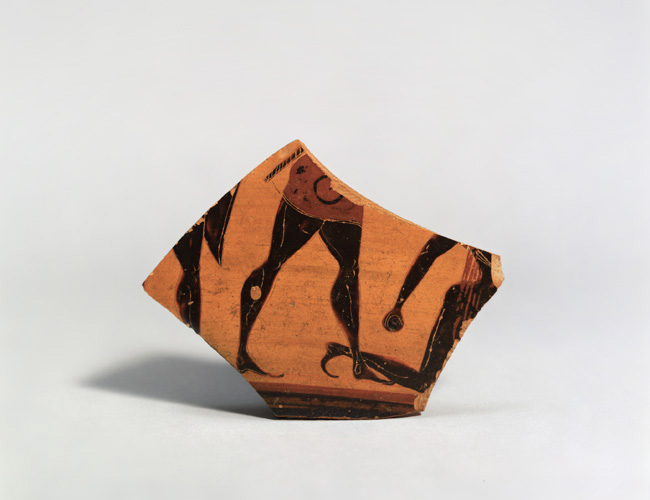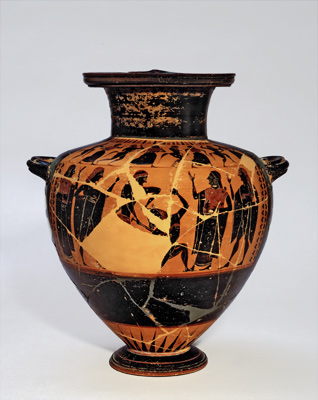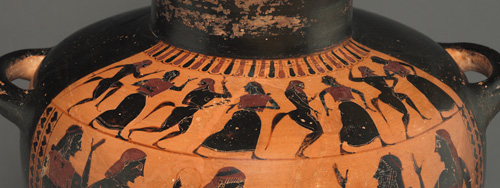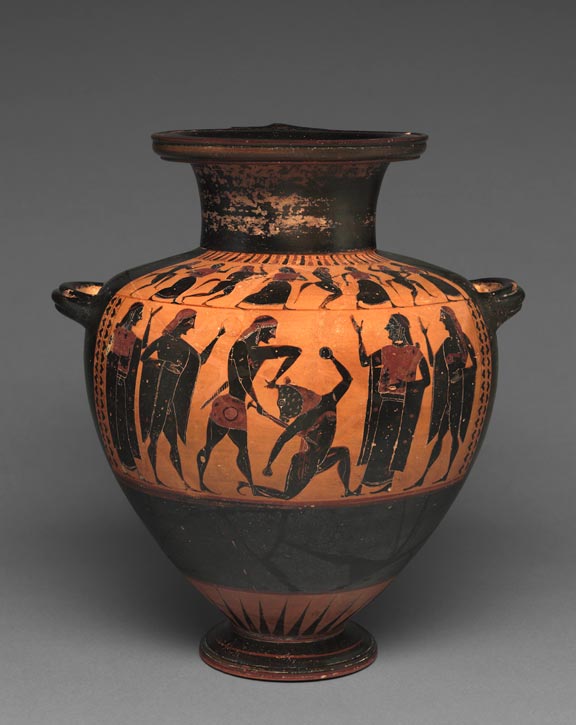We recently asked Amy Brauer, the Diane Heath Beever Curator of the Collection, in the Division of Asian and Mediterranean Art, if she could pick an object in the collections that has a compelling story. She immediately thought of a 6th-century BCE Greek vase that had been missing a fragment for years.
Q First, could you tell us about the vase? A It’s a hydria, or water jug, and it dates to about 540 BCE. It was bequeathed to the Harvard Art Museums by Mrs. Edith Purrington in 1963. Like many ancient Greek vases, it had been reassembled from fragments and had some missing pieces that the conservators filled with plaster. There was a particularly large loss right in the middle of the central scene.
Q How did you know what the scene depicts with so much missing?A We could tell the scene depicted the myth of Theseus and the Minotaur because of the remaining visible elements, such as the hint of the animal’s head, the upraised arm holding a stone, and the thrusting sword. This was a popular story on Greek vases, and Theseus and the Minotaur are often shown in this standard pose.
Q But this vase has an intriguing story. A Yes. In 1995, an assistant curator, Aaron Paul, a Greek vase specialist, was showing a student how a fragment, given to Harvard in 1912 by Henry Haynes, showed a portion of the fight between Theseus and the Minotaur. Aaron walked over to the water jug to explain that we had the same scene painted on the Purrington Hydria, at which point he suddenly realized that the Haynes fragment fit the space of the plaster fill on the hydria perfectly. So these two pieces that were donated 50 years apart, and from different donors, were once again united.
Q Are you conducting further research on the story behind the missing fragment? A Yes, I want to understand how we came to have these two pieces of the same vase entering the collections at two different times from two different donors. I’m hoping to find, somewhere along the line, a connection between Haynes and Purrington, but I haven’t yet.
Q What do you think this story says about the role of the Harvard Art Museums’ collections? A I think it speaks to the importance of teaching students how to look carefully and critically at whatever they are studying—in this instance, how one can identify an entire scene just by looking at the posture of the arms and position of the legs on one small fragment.






